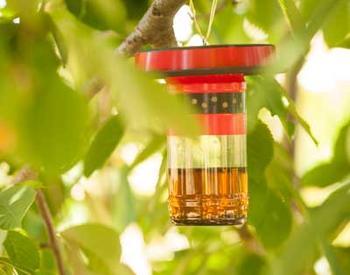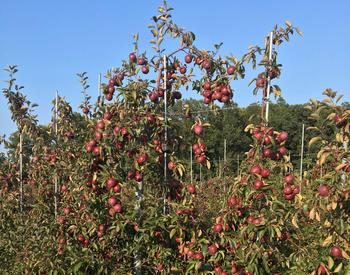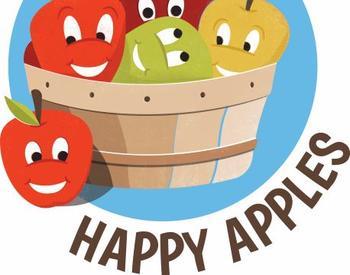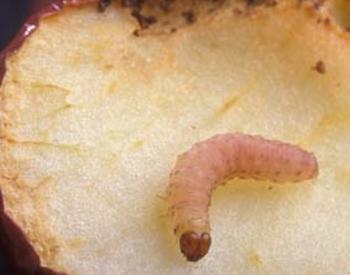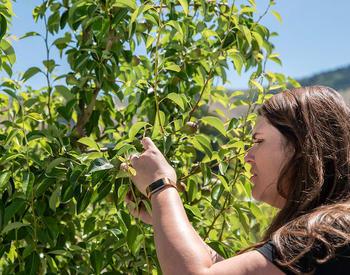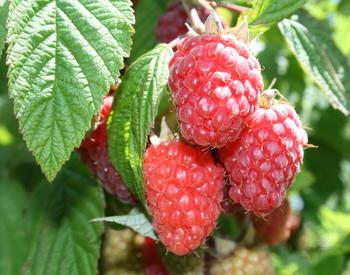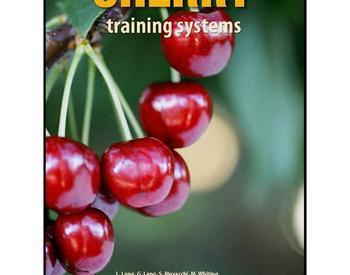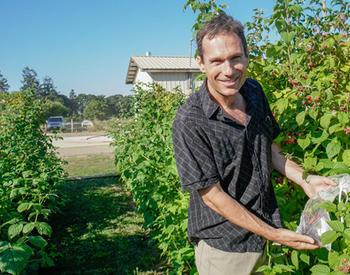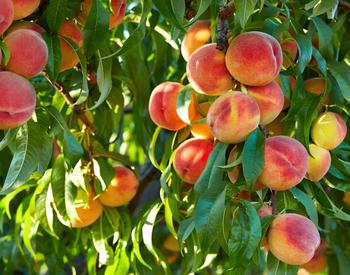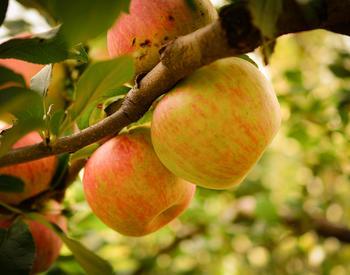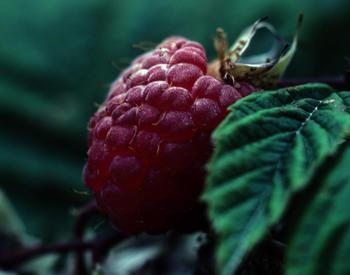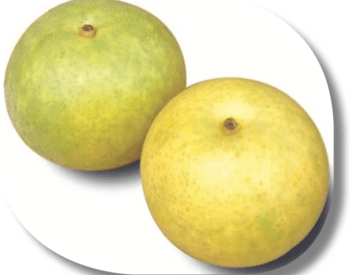Many of us love the idea of harvesting our own tree-ripened fruit. What a pleasure it is to bite into a crisp, sweet apple, to pick handfuls of ripe cherries to gorge on, or to eat a peach so juicy that you need to be outside to keep from making a mess.
These are fine images, but they don’t tell the whole story of homegrown fruit. In reality, fruit trees take many years to come into bearing. They require a lot of time for training, pruning, fruit thinning, spraying and harvesting. And because pests can damage your tree or crop, you may not even get a good crop unless you are disciplined.
Many people may not realize it but local fruit producers who allow their crops to mature on the tree and then allow you to pick them give you the fresh crops you desire without the cost or trouble of producing your own. Let's examine the first four years of a fruit tree's life to show you how your time and costs add up to some expensive fruit.
The first year
In this example, we will buy and care for an apple tree. Most trees cost about $25 retail. You need at least two apple trees, so they can pollinate each other. Order your trees in December so that they arrive, bare root and ready to plant, by February.
Head out to the backyard to find a spot for your new trees. The trees need eight hours of sun to grow well. It will take you about half an hour to plant each tree. Dig the holes about twice as big as the root area.
Most homeowners with a large backyard can use EMLA 7 rootstock with their apple trees. EMLA 7 will make a tree about 60% of the size of a standard tree. Space your trees 15–18 feet apart and expect your tree to get 10–12 feet tall.
If you have a small backyard, you may want to use a dwarfing rootstock such as EMLA 9 or EMLA26. These trees will only get 7–8 feet tall and wide. They will require a stake or other kind of support.
In the first year, train the trees to a central leader shape that has a primary trunk going straight up, with branches being widespread and well distributed around the trunk. This will require making some branch spreaders and spending an hour training your two trees throughout the summer.
During the first year, your trees will not have a crop on them, so you will not need to do a lot of spraying. But you will need to protect the trees from fungi and bacterial blights as well as a few insects. You should go ahead and buy some products now that will last for two to three seasons. Sprays are mostly needed in the dormant season just before bud break and in the late bloom period. Spraying will become more complex as your trees get older and you are protecting a crop.
Cost breakdown for year 1
- Cost of two apple trees: $50
- Spray materials for several years: $45
- Labor for planting (one hour): $20
- Sprayer: $25
- Labor for training in summer: $20
- Tripod ladder, 10-foot: $130
- Pruning lopper: $45
- Pruning handsaw: $30
- Pruning hand shears: $25
- Total cost for the first year: $390
The second year
Assuming your trees survived the first growing season, your first job in the second year will be to prune them during their dormant period from December to March. In our area, it is generally recommended to let the worst of winter pass before pruning in February. Pruning young fruit trees should be a minimal job. You do not want to remove much wood during the first three years. You will be taking off water sprouts or suckers and any limbs that would be out of place from your desired shape.
This will be the first winter that you will have developing flower buds that will need to be protected with dormant sprays. You will be making one November dormant oil and copper spray, one February lime-sulfur spray and a lime-sulfur spray just before bud break when you see a little pink on the bud. You will also want to make another sulfur spray when the petals have fallen after bloom.
March or April is a good time to apply fertilizer around the drip line of the trees. A good rule of thumb is to use one-eighth of a pound of 10-10-10 fertilizer for each year of age of the tree. Sprinkle the fertilizer around; don’t drop it in one place.
In late May or early June, spend about 30 minutes with each tree, thinning fruit that sets in groups of three to four fruit per spur. Whether a tree is young or old, you will want to reduce the fruit number to one fruit per spur, and the fruit should also be about 6 inches apart.
In spring to early summer, control codling moth. You will need to spray an insecticide two to three times, starting 17–21 days after full bloom. Place a few pheromone traps in your trees to monitor insect populations, then spray when the counts get to five moths in a trap. You can also use Cyd-X, a virus, or Spinosad, an organic insecticide, to get good control of codling moth. If your area has apple maggots, you may need to spray in late July with Malathion or pyrethrin. Red sticky balls can be hung in the trees to monitor apple maggot populations.
If you have a successful summer you will harvest about a dozen fruit from each of your small trees. Don’t let too many fruits set on the tree during the first couple of years. You don’t want to break limbs.
Cost breakdown for year 2
- Two sprays with fungicide, labor: $20
- Three sprays with insecticide, labor: $30
- Four pheromone traps and lures: $30
- Pruning and training, labor: $20
- Fruit thinning, labor: $20
- Fertilizer: $10
- Fall cleanup of leaves and fruit: $20
- Total cost for the second year: $150
The third year
Now that you are into the third year, you are getting pretty knowledgeable about when to spray, when to prune and how to train your trees. You are getting smarter at the right time because your tree is getting larger and you are being challenged to know how to control its size. Aggressive pruning of a young tree will result in the tree becoming vigorous, while too little pruning leads to a dense tree that will produce too many small fruits with poor color. You will need to spend about an hour pruning these two trees. You will also need to spend about an hour each time you spray your trees. You have probably used up the initial spray materials you bought the first year, so it is necessary to buy another round of lime-sulfur, copper and horticultural oil. When you get to the spring you probably will still have enough insecticide left from last year to make it through this third year.
During the third season, you will see quite a few fruit spurs forming on your branches. You will need to do more fruit thinning than the previous year. You will also have more fruit on the tree to protect from wild animals. This may turn out to be one of your greatest frustrations as a fruit grower. You have put a lot of energy into producing fruit only to see the birds, foxes and raccoons eat it. You may decide to buy a net to keep the birds out, but it doesn’t work well for foxes and raccoons.
Cost breakdown for year 3:
- Two sprays with fungicide, labor: $20
- Three sprays with insecticide, labor: $30
- Four pheromone traps and lures: $30
- Fungicides: $30
- Pruning and training, labor: $20
- Fruit thinning, labor: $20
- Tree netting: $25
- Fall cleanup of leaves and fruit: $20
- Total cost for the third year: $195
The fourth year
This is the year that you have been waiting for. Your trees are now entering their productive years. For most apples, these productive years start around the fourth or fifth year and can continue for 30 years or more if the trees are well cared for.
You will spend quite a bit more time pruning this year and in the years ahead than in previous years, especially if you get lazy and decide to skip a year. Budget about one hour for pruning and for training each tree from this point forward.
You will make the same two to three sprays of fungicide and insecticide that you made in the third year, but you will be using more products each year as your trees get larger. You may decide your 1-gallon sprayer is not large enough to give your trees good coverage. If you decide to get a 4- or 5-gallon sprayer, it will cost you about $100. Keep using pheromone traps and lures, and monitor your insects in the traps. This may allow you to reduce or eliminate several sprays.
Cost breakdown for year 4
- Two sprays with fungicide, labor: $20
- Three sprays with insecticide, labor: $30
- Four pheromone traps and lures: $30
- Fungicides and insecticides: $40
- Fruit thinning, labor: $30
- Pruning and training, labor: $20
- Fall cleanup of leaves and fruit: $20
- Fertilizer: $10
- Total cost for the fourth year: $200
Summing it all up
Total cost for four years: $935
Total cost (minus labor) for four years: $475
If you look back now to see what it will cost to raise these apple trees, you will have reached a total of $935. You may say that the labor cost is unrealistic since you will be doing the work yourself, but your time is worth something. We used a figure of $10/hour to put a value to it. If you took out all the labor charges for planting, training, pruning, spraying and cleaning up, it would reduce your costs by $460, but you would still need to spend $475 on equipment and spray materials. If you were to tell me you would be raising your trees organically so you wouldn’t need so many spray materials, you would be wrong. The dormant sprays are all organically approved, and the insecticide sprays would then need to be shifted to Spinosad, Cyd-X virus, Rotenone or Surround. You will still need these sprays to produce quality fruit.
In reality, most homeowners will not buy all this equipment and use all these products. Most homeowners won’t remember to spray at the proper time, and the fruit they get probably won’t be as nice as the fruit being sold locally at fresh market fruit stands. Many homeowners will also lose trees to insects and disease. And it’s not uncommon to lose a crop to a spring frost. Homeowners will often lose interest in caring for their trees, creating a harbor for insects and disease that will move out to attack commercial orchards.
There can be a lot of disappointments growing fruit, but if you commit to doing a good job, you may also enjoy the process. If you produce nice fruit, it still probably costs you a lot more than you would pay a local grower for all you could eat. Remember that you can buy a whole box of apples, peaches or pears for about $20 locally. We estimated you will spend more than $100 a year to raise just a couple of trees.
The other point of buying fruit from local producers is that it keeps them in business. Your local growers provide all of us with delicious, nutritious, tree-ripened fruit.


